Philippine pavilion in Dubai Expo 2020 inspired by coral reefs, diaspora, and dedicated to OFWs

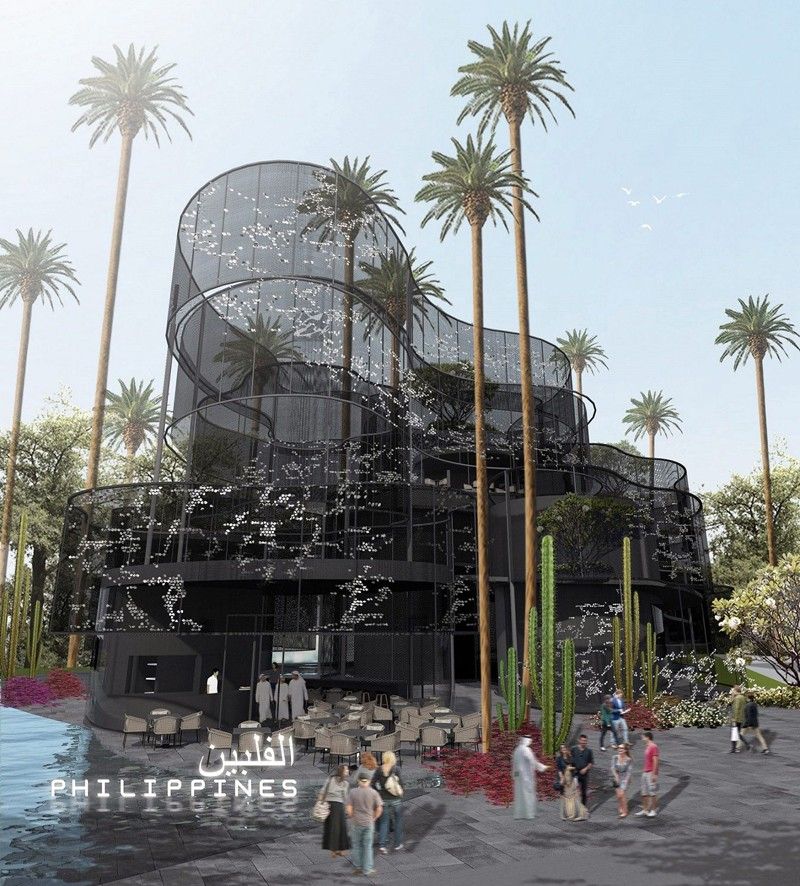
‘It’s a good time to celebrate our people in the Middle East,’ says DTI Secretary Ramon Lopez.
After an absence of eight years, the Philippines is participating once again at the World Expo set for 2020 in Dubai.
There are two unique things about this participation: first is why we’re going and second is the design.
Department of Trade and Industry (DTI) Secretary Ramon Lopez says it’s “because we have two million overseas Filipino workers in the Middle East. We want to be there to give them pride and joy. Being in this particular expo hosted by Dubai goes beyond the financials. We see it as uplifting, inspiring.”
It’s true that our OFWs helped to literally build Dubai decades ago — they were there as construction workers, and today as professionals, architects and engineers in multinational corporations and construction companies, in the hospitality industry, in the airports of the UAE, and in the homes of local Emiratis and expats.
“Because the UAE values Filipinos helping with their economy and our good relationship with their government, they wanted us to be at the expo and give the Philippines a big exposure. It’s a good time to celebrate our people in the Middle East.”
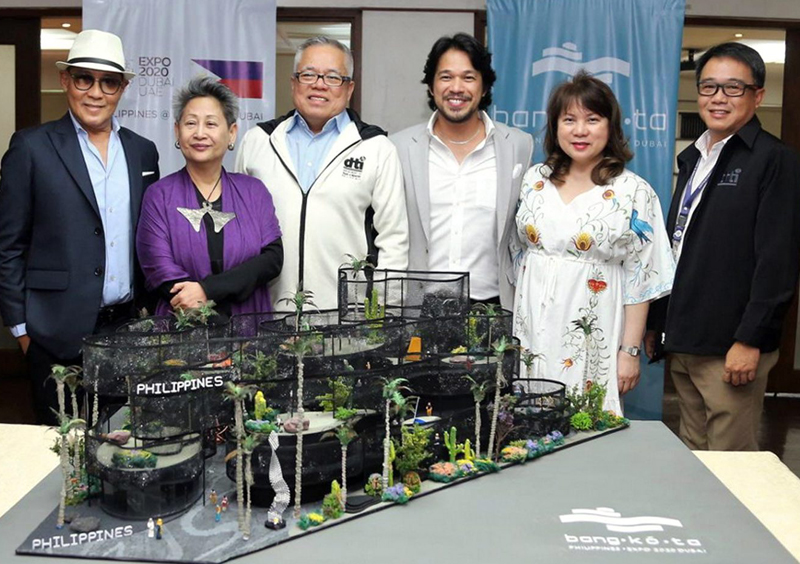
Getting ready for the World Expo 2020 in Dubai: Designer Budji Layug, curator Marian Roces, DTI Secretary Ramon Lopez, architect Royal Pineda, DTI Assec. and expo participation alternate commissioner general Rosvi Gaetos, and DTI Undersecretary Rowel Barba at the unveiling of the Philippine pavilion design last week.
Expo participation is expensive starting with building a pavilion, its size and location on the expo grounds. We jokingly asked if the Secretary was given a “package deal” that was too good to resist. It turns out he was!
The Philippine pavilion will be located at the Sustainability District on the expo grounds along with countries such as Canada and Portugal. Our pavilion — conceptualized and designed by architect Royal Pineda and designer Budji Layug — will be on a 3,163-sqm. plot and the two-level structure will measure 1,386 sqm.
DTI Assistant Secretary Rosvi C. Gaetos leads the expo task force as chairman and commissioner. “It’s been a real challenge jumpstarting the project since I came onboard in November 2018, primarily because there was tremendous pressure to deliver a theme concept to the expo organizers even when the Administrative Order had not been signed yet by President Duterte nor was there an approved budget (the AO was signed and released last May; the 2019 budget was approved by the President just this week, and we are now awaiting release of the funds from the Budget Department). My experience in expo organization when I was still in tourism helped a great deal since I could anticipate what to do and proact,” Rosvi says.
The theme and country branding, as well as its goals, according to Secretary Lopez, is to show the Philippines as “a creative and compassionate nation. We’re going beyond the tourism aspect of participation, there’s also a trade aspect and we’re targeting the Middle East, Africa and South Asia region with B2B activities, conferences and trade exhibitions.”
The estimated budget for the participation is P900 million.
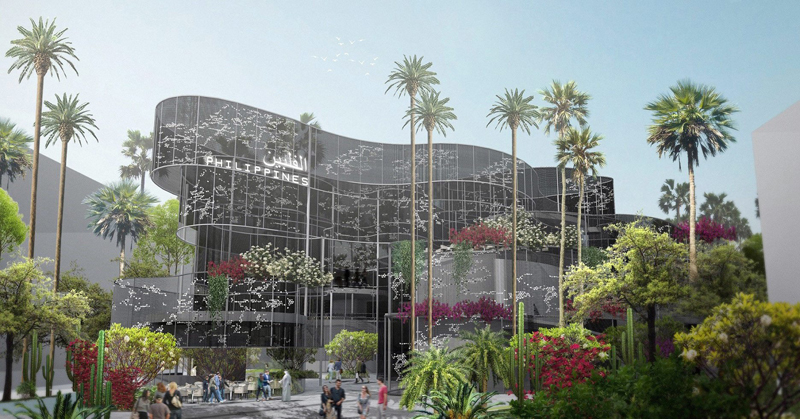
Inspired by the country’s underwater resources, the Philippine pavilion is called “Bangkota,” the ancient Tagalog word for coral reefs, and designed by architect Royal Pineda and designer Budji Layug. It is open, transparent, with a fluid form and mesh walls.
Rosvi explains, “The President himself instructed the DTI to handle the participation in the expo, hence we are getting the full support of the whole government bureaucracy. The fund source for our participation comes from the national budget. The expo budget is on a year-to-year allocation from 2019 to 2021. We have an approved P235 million budget for this year; next year, we will submit a budget of a little over P440 million, and a last tranche of about P220 million for 2021. The amounts for 2020 and 2021 are not final and may be cut by the Budget Department during the budget process. The bulk of the budget goes to design and building of the PH pavilion.”
This is the first time that the country is building its own pavilion from the ground up and on the biggest plot yet.
As former CITEM managing director, Rosvi is no stranger to gathering support and mounting exhibits abroad, but the World Expo is an entirely different ballgame. “Doing an expo of this magnitude is a challenge I cannot resist, if only to prove that I have still many things to learn even if I have done this before,” she says. “The personal satisfaction will surely come not once but many times — once the building is up and we open on time; and after the expo shuts down and we can all breathe easier for a job well done.”
Her jump from CITEM to DTI “is a welcome change,” she says. “CITEM is a deadline-driven agency and I had to manage it at close range with my hands full of operational issues. At DTI, I gained a different and wider perspective: there are five agencies technically under my jurisdiction, which includes CITEM, which are all headed by directors. I am no longer in operations but more in direction setting and supervision of results. But as alternate commissioner general for the expo, I am back in operations!”
Architect Royal Pineda has always regarded nature as the canvas you build around, and for the design of the Philippine pavilion, which he is doing with Budji Layug, the canvas just got bigger — 7,000 islands bigger.
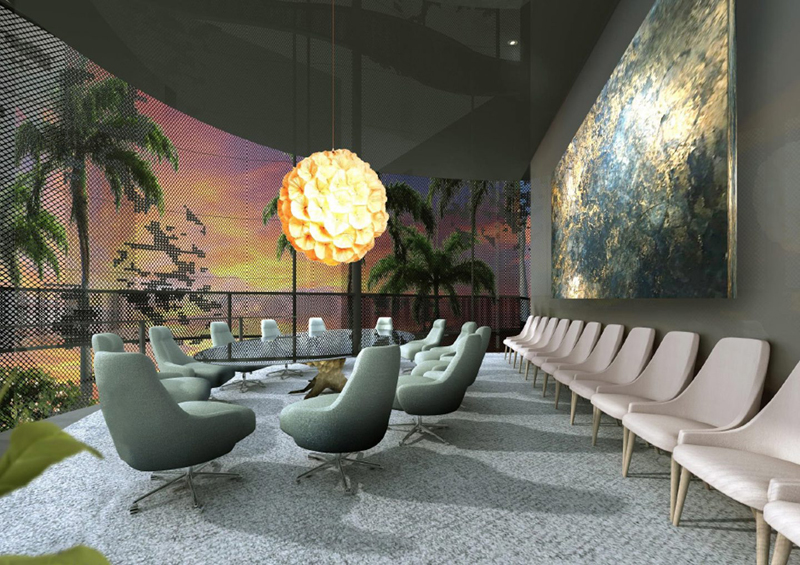
The interiors of the pavilion will have several areas for exhibits and an artisanal café.
Imagine the entire coral reef system of the Philippines as his canvas and you get “Bangkota,” the ancient Tagalog word for coral reef or “the world’s biggest organism made up of the world’s smallest organisms.”
As an itinerant diver myself and a snorkeling enthusiast, I’ve seen up close how beautiful our coral reefs are — from the coral triangle of Anilao to the islands of Coron, El Nido, Balicasag, Dauin, Apo and the Hundred Islands National Park.
It’s a wonderful inspiration and one that connects every Filipino scattered around our islands and around the world.
As expo lead architect and artistic director, Royal says, “As designers, we’re naturalists and modernists. We knew our pavilion would be in the Sustainability District, and we felt that the real asset of the Philippines is nature and that’s what we want to show. You have all these rock-star architects and design focusing on technology, but we are basically presenting the modern mindset of the Philippines.”
Both Secretary Lopez and Royal talk about the Filipino diaspora and yet people are still connected by their roots. “The coral reef system is the biggest organism around the world and it’s all connected,” Royal says. “We are in the center of the center of biodiversity and we want to present the nature of the country.”
Designer Budji Layug will do the interiors of the pavilion. Royal says the beauty of their collaboration is that they get to fuse their sensibilities “to the point that when I do something as an architect and he as designer, everything is aligned in the end. For us both, design and creativity have no boundaries.”
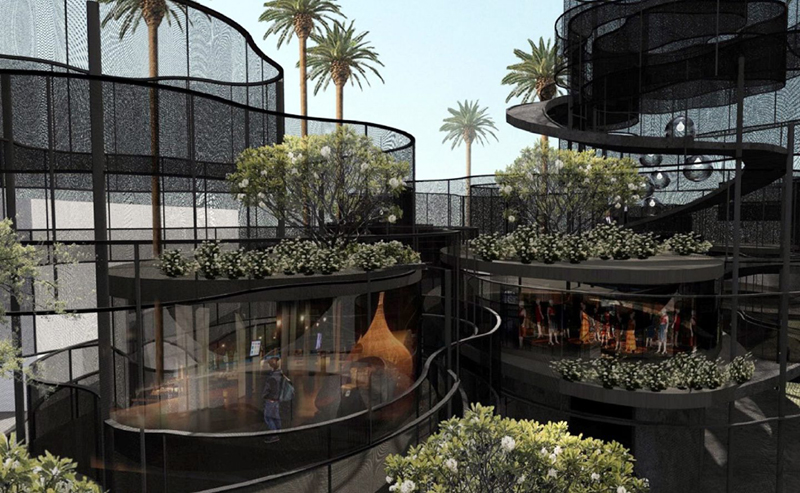
The outdoor area will feature trees and plants native to the Philippines.
The interiors of Bangkota will feature galleries showcasing Filipino culture — our history, promise and progress, using online portals to channel live updates through the pavilion exhibits. “This way, the pavilion acts like a scope to the reality of Filipino culture today: fast-paced and constantly moving; transforming the exhibit into a continuously changing information hub. The past, present and future of the Philippines transition chronologically and seamlessly, guided by design.”
Like the forms of bangkota, the pavilion is fluid, transparent (mesh makes up the walls), open and flowing. It is divided into several areas that include exhibits that showcase our ecosystem, local products, an artisanal cafe and performances.
Royal and Budji are known for their resort-inspired design of Cebu’s international airport, high-end condominium buildings, the new Clark City — and some of the most beautiful homes in the country including that of Kenneth Cobonpue’s. So what kind of fulfillment do they get from the expo project?
“This is actually what we’ve been waiting for, for a long time. Designing for high-end clients is very satisfying and makes for good business, but this one — this is our playground, it’s building what we’ve always believed in.”
* * *
Check out the author’s travel blog at www.findingmyway.net. Follow her on Twitter and Instagram @iamtanyalara.



















